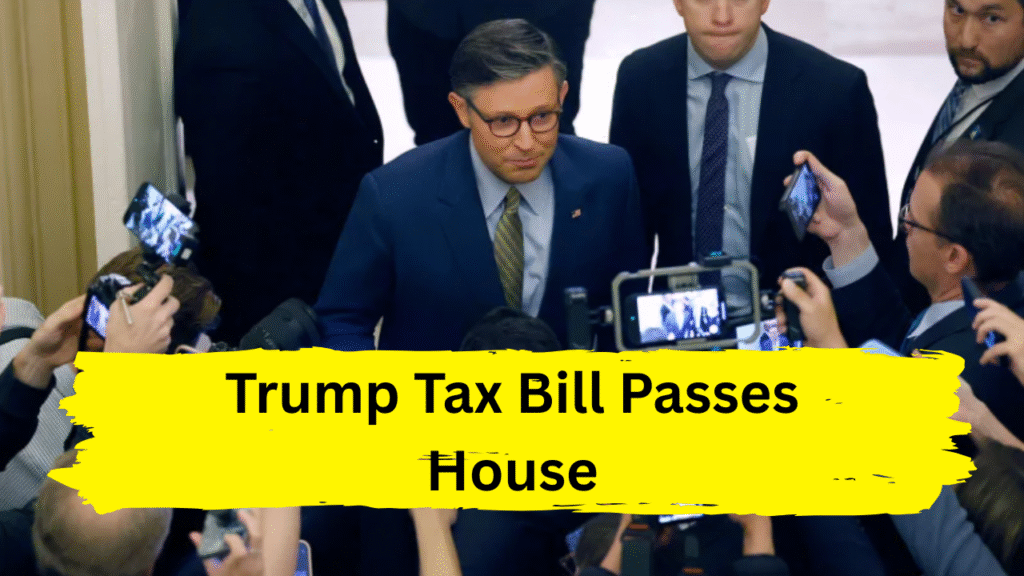In the early hours of Thursday morning, the U.S. House of Representatives passed a sweeping tax reform bill championed by former President Donald Trump, marking a significant victory for Republican lawmakers and setting the stage for a high-stakes battle in the Senate. The legislation, dubbed the “Tax Relief for American Families Act,” passed narrowly by a vote of 217-215 after a marathon session that stretched through the night. The bill’s advancement reignites a familiar debate over tax policy, economic priorities, and the enduring influence of Trump’s agenda on Capitol Hill.
The Bill’s Core Provisions
At its heart, the legislation seeks to extend and expand several tax cuts initially introduced during Trump’s presidency, particularly those from the 2017 Tax Cuts and Jobs Act. Key components include permanent reductions for corporate tax rates, an increase in the standard deduction for middle-income households, and the elimination of the estate tax a move critics argue disproportionately benefits the ultra-wealthy. The bill also introduces new incentives for domestic manufacturing and energy production, aligning with Trump’s long-standing emphasis on revitalizing American industries.
Democrats have lambasted the proposal as a boon for corporations and top earners, warning it could exacerbate income inequality and balloon the federal deficit. Independent analyses, including a preliminary report from the Congressional Budget Office, suggest the bill could add upwards of $1.2 trillion to the national debt over the next decade if enacted without offsetting revenue measures.
A Fractured House Vote
The path to passage was anything but smooth. House Republicans, holding a razor-thin majority, faced internal dissent from moderate members wary of the bill’s fiscal impact and its potential to become a liability in upcoming elections. Meanwhile, Democratic leadership unified in opposition, framing the legislation as a reckless giveaway to the wealthy. “This bill isn’t about helping working families it’s about padding the pockets of billionaires and big business,” argued House Minority Leader Hakeem Jeffries during the heated floor debate.
The vote culminated in a dramatic late-night session, with lawmakers trading barbs over procedural rules and last-minute amendments. Several Republicans from swing districts initially withheld support, demanding concessions such as expanded child tax credits and protections for small businesses. In the end, Speaker Mike Johnson and Trump loyalists secured the necessary votes through a combination of political arm-twisting and promises to address concerns in future legislation.
Trump’s Shadow Looms Large
The bill’s passage underscores Trump’s enduring grip on the Republican Party, even as he remains a polarizing figure in national politics. Throughout the debate, GOP leaders framed the legislation as a fulfillment of Trump’s vision for economic revival, echoing his rhetoric about “putting America first” and slashing regulatory burdens. Trump himself celebrated the House vote in a post on his social media platform, Truth Social, calling it “a giant step toward making America wealthy again.”
Critics, however, see the bill as a strategic play to energize Trump’s base ahead of the 2026 midterms. By reviving signature tax policies, Republicans aim to draw a sharp contrast with Democratic priorities, such as climate investments and healthcare expansion. Yet the move carries risks. Polling indicates mixed public sentiment toward corporate tax cuts, with many voters expressing skepticism about their economic benefits.
The Road Ahead in the Senate
The bill now heads to the Senate, where its fate is far from certain. Democrats hold a slim majority, and Majority Leader Chuck Schumer has already vowed to block what he calls “another Trump-era tax scam.” To bypass a filibuster, Republicans would need to secure 60 votes a steep hurdle given unified Democratic opposition.
Some Senate Republicans, including fiscal hawks like Mitt Romney and Lisa Murkowski, have also voiced reservations about the bill’s deficit implications. This internal dissent could force revisions, such as sunset clauses for certain tax breaks or means-testing for high-income households. However, hardline conservatives, particularly those aligned with Trump, are pushing to preserve the bill’s core provisions.
Complicating matters further is the looming expiration of several tax provisions from the 2017 law, which are set to phase out by 2026. Lawmakers from both parties acknowledge the need for a broader tax code overhaul, but partisan divisions over who should bear the burden of taxation remain a formidable obstacle.
Broader Implications
Beyond its immediate economic impact, the bill’s progression reflects a deepening ideological divide in Washington. For Republicans, it represents a commitment to supply-side economics and a rejection of what they view as Democratic overreach in social spending. For Democrats, it’s a symbol of misplaced priorities a choice to favor the wealthy over investments in healthcare, education, and infrastructure.
The debate also highlights the evolving role of Trump in shaping legislative agendas. Even out of office, his policy preferences continue to drive Republican strategy, testing the party’s balance between populist appeals and traditional fiscal conservatism.
Conclusion
As the Trump tax bill moves to the Senate, it carries with it the weight of ideological battles, fiscal dilemmas, and the specter of a former president’s legacy. Its passage in the House, achieved through late-night maneuvering and partisan resolve, sets up a consequential showdown in the upper chamber. Whether the legislation survives intact, undergoes significant changes, or stalls entirely will depend on the delicate dance of negotiation and compromise a dance that grows increasingly fraught in an era of deep political polarization.
For now, the bill stands as a testament to Trump’s enduring influence and the high stakes of tax policy in shaping the nation’s economic future. As lawmakers and voters alike grapple with questions of fairness, growth, and fiscal responsibility, one thing is clear: The debate over who benefits from America’s tax system is far from over.


